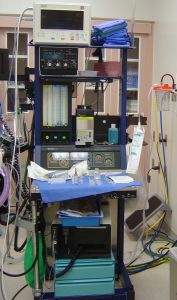Have You Suffered a Concussion? Common Brain Injuries Under Scrutiny
Each year in the United States, an estimated 1.7 million victims experience a head injury and 75 percent of those patients suffer from a concussion. A concussion is a temporary disruption in the way the brain functions, and it can cause a variety of symptoms that seem to last for a short period of time, such as sensitivity to light and sound or changes in mood, cognitive function and behavior. Most concussions are caused by car accidents, falls or violence, but there are also other reasons for these types of brain injuries to occur, including sports injuries. 
If you are one of the many people who has experienced a concussion, you may think that you’ve recovered fully as those first weeks and months pass. Unfortunately, brain injury attorneys in Hartford know concussions can have lasting impact. Recent studies suggest changes to the structure of the brain can still be seen on a diffusion MRI four months after a concussion occurs. Repeated concussions can also have a serious long-term impact on victims, resulting in a significantly increased risk of dementia and other complications.
The Lasting Effects of a Concussion
When a CT-scan or an MRI is performed several months after a concussion occurs, the brain may appear to have returned to normal. However, a new study published in the medical journal Neurology suggests that this is not actually the case. The study involved researchers from the University of New Mexico using a diffusion MRI to take a closer look at the effects of concussion on the brain.
A total of 26 patients who had experienced a mild trauma and concussion had a diffusion MRI performed 14 days after the concussion and then another diffusion MRI performed four months after the head trauma. At the same time as the diffusion MRI was performed, the victims of the trauma also underwent cognitive and memory testing.
A diffusion MRI works differently than other types of MRI’s because the test traces molecules moving through the brain, especially water molecules. The result is that the test paints a clearer picture of the architecture and the structure of the brain. The diffusion MRI of the concussion victims showed that compared to 26 healthy patients who had not experienced any head trauma, those who had experienced a concussion had 10 percent more fractional anisotropy (FA) in the grey matter of the prefrontal cortex. This result showed up in the test that was conducted four months after the concussion occurred, suggesting that the brain looks different for a long time after trauma.
It was not clear from the research exactly why the 10 percent more FA was present in the brains of concussed victims. It could have been a function of healing, or the increased FA may also have been caused by fluid buildup that had occurred during the concussion and not been resolved. However, the increase may also have been due to changes in the brain’s structural cells.
The behavioral tests also revealed that the victims who had experienced the concussion did not perform as well on memory tests or tests of cognitive function.
All of this is bad news for brain injury victims as it suggests that a concussion is a major injury with a lengthy recovery time and potentially long-lasting changes to the brain.
Contact the Law Offices of Mark E. Salomone & Morelli in Hartford today to schedule a free consultation. Call 1-800-WIN-WIN-1.
